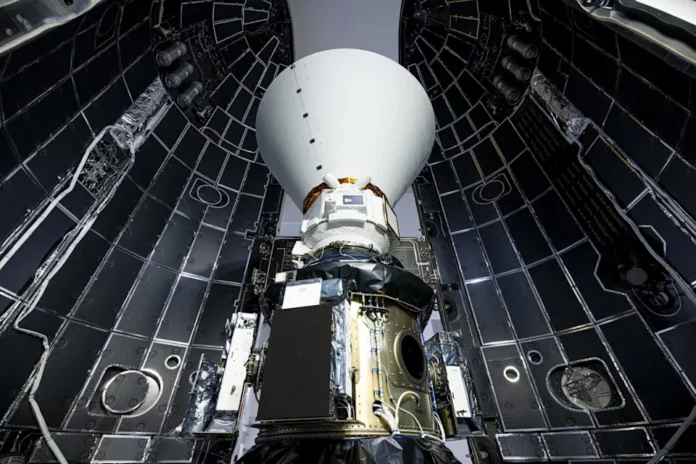NASA‘s SPHEREx observatory is now in space on a two-year mission to create a 3D map of the entire celestial sky. The telescope left the ground aboard a Falcon 9 rocket from a launch pad in California, four years after NASA announced that the SpaceX flight would launch the mission along with NASA’s PUNCH (Polarimeter for the Unification of the Crown and Heliosphere) microsatellites. SPHEREx separated from the SpaceX spacecraft at 12 a.m. EDT on March 12 and will remain in low Earth orbit, where it will maintain a position relative to the Sun that will remain unchanged for a year.
Each 98-minute orbit will allow the observatory to see a 360-degree swath of the sky in both optical and near-infrared light. The telescope can capture more than 360-degree swaths as the Earth moves around the Sun, allowing it to map the entire celestial sky within six months. SPHEREx has been designed to survey the entire sky every six months for two years, with the goal of creating a 3D map of more than 450 million galaxies. The telescope will also image and collect information on more than 100 million stars in the Milky Way.
The SPHEREx map will be colorized: it will separate the infrared light emitted by stars and galaxies into 102 separate colors using a technique called spectroscopy. NASA compares it to “a prism breaking sunlight into a rainbow.” The agency says that observing objects in different colors will reveal different properties of objects, such as their composition. For galaxies, their colors can help scientists determine their distance from our planet. The data provided by SPHEREx will give scientists information about what happened immediately after the Big Bang and may provide evidence of cosmic inflation or the rapid expansion of the early Universe. In four days, SPHEREx will remove the protective coating from the telescope’s lens and begin its scientific research in a little over a month, when the temperature drops.
Meanwhile, the four PUNCH satellites, which will also enter a synchronous orbit with the Sun, will map the solar corona by taking polarized images of the celestial object in white light. They will collect data that will help us better understand how the corona turns into the solar wind, which could lead to accurate predictions of space weather phenomena that affect spacecraft orbiting the Earth.









